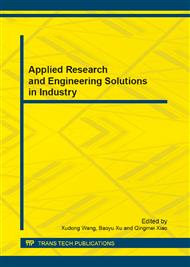p.148
p.153
p.158
p.163
p.167
p.172
p.177
p.182
p.186
Simulation Analysis of Tire Dynamic Model
Abstract:
The tire dynamics simulation was done for the different speeds on the dry and wet roads with Magic Formula tire model. The coefficients of Magic Formula tire model under different conditions were obtained by means of the tire test data based on the nonlinear least squares method. The Magic Formula has a good ability to fit the test data for the longitudinal, lateral force and align moment. The tire dynamics simulation results show that at 30mph the wet tire peak longitudinal and lateral forces are only slightly less than the dry peak forces. The wet tire peak longitudinal and lateral forces decreases as the tire speed increases. This shows that the speed has a larger impact on the tire force. The align moment is relatively small. So it can be ignored in the vehicle dynamics analysis.
Info:
Periodical:
Pages:
167-171
Citation:
Online since:
February 2013
Authors:
Keywords:
Price:
Сopyright:
© 2013 Trans Tech Publications Ltd. All Rights Reserved
Share:
Citation:


